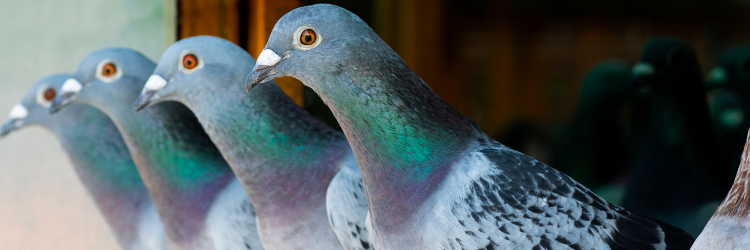What do ‘Dim-witted’ Pigeons and AI Have in Common?
There’s now evidence that pigeons and AI tackle challenging tasks similarly. Research has already shown that pigeons can solve complex categorization tasks differently than a human’s selective attention and explicit rule-use approach.
Instead, they use a “brute force” approach similar to that used in AI models, according to Brandon Turner, professor of psychology at Ohio State University. Turner and a colleague successfully tested a simple AI model to see if it could solve the problems in the same way they thought pigeons did. Turner conducted the study with Edward Wasserman, a professor of psychology at the University of Iowa. They published their results in the journal iScience.
Pigeons were shown a stimulus, including lines of various widths and angles, concentric rings, and sectioned rings. They had to peck a button on the right or left to indicate to which category it belonged. A correct answer prompted a food pellet. The pigeons improved through trial and error, making the correct choices in one of the easier experiments from about 55% to 95% of the time. In a more difficult scenario, correct responses improved from 55% to 68%.
The pigeons used associative learning, linking two phenomena with each other. “Associative learning is frequently presumed to be far too primitive and rigid to explain complex visual categorization like what we saw the pigeons do,” Turner said. However, that’s precisely what the researchers found.
The team’s AI model tackled the same tasks using the two simple mechanisms pigeons were presumed to use: associative learning and error correction. The AI model learned to make the right predictions, increasing the number of correct answers. Humans, however, try to develop a rule or rules that could make the task easier. When there are no rules to simplify a task, humans get frustrated and may give up.
So, do we need to be wary of AI and pigeons too?

